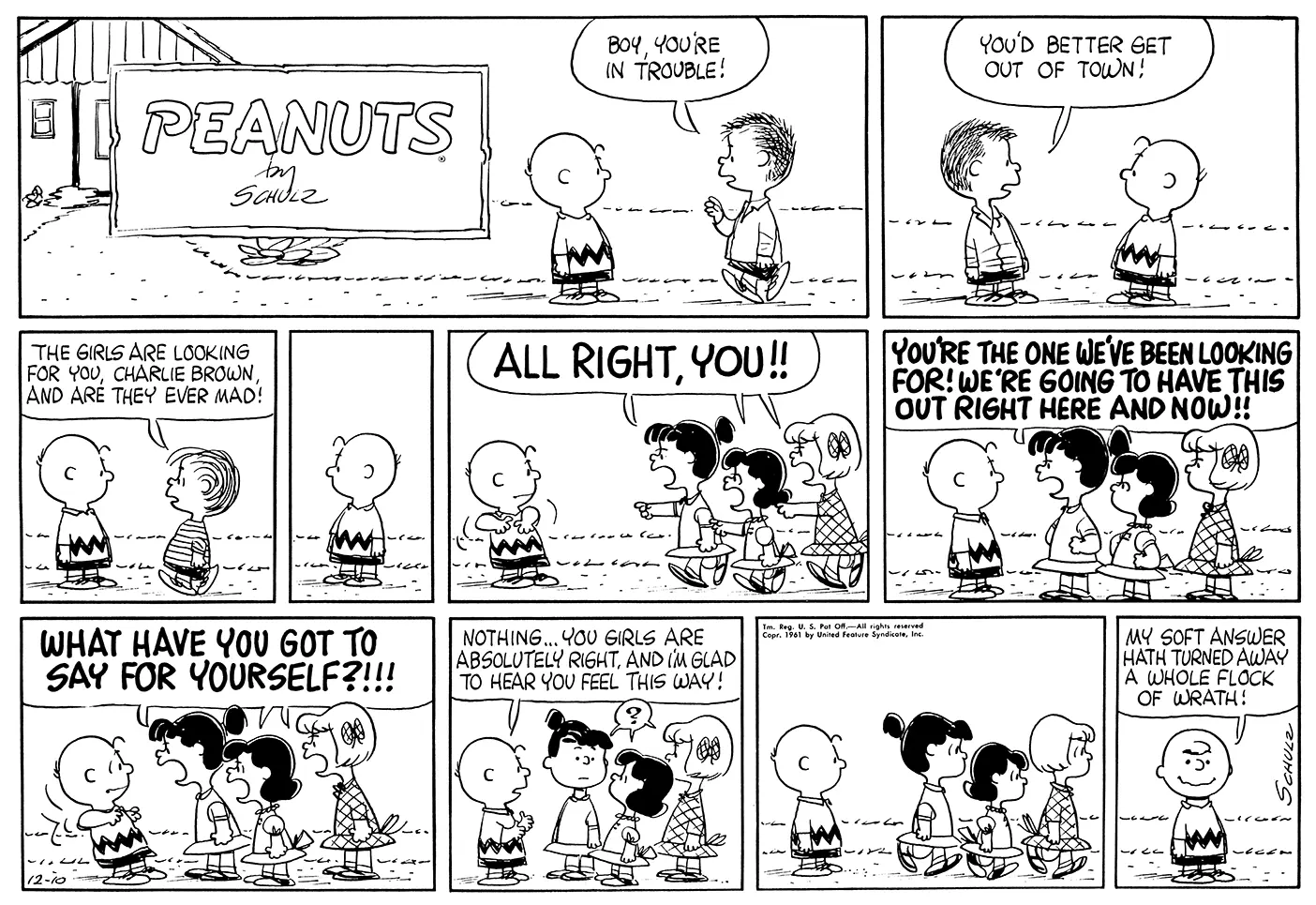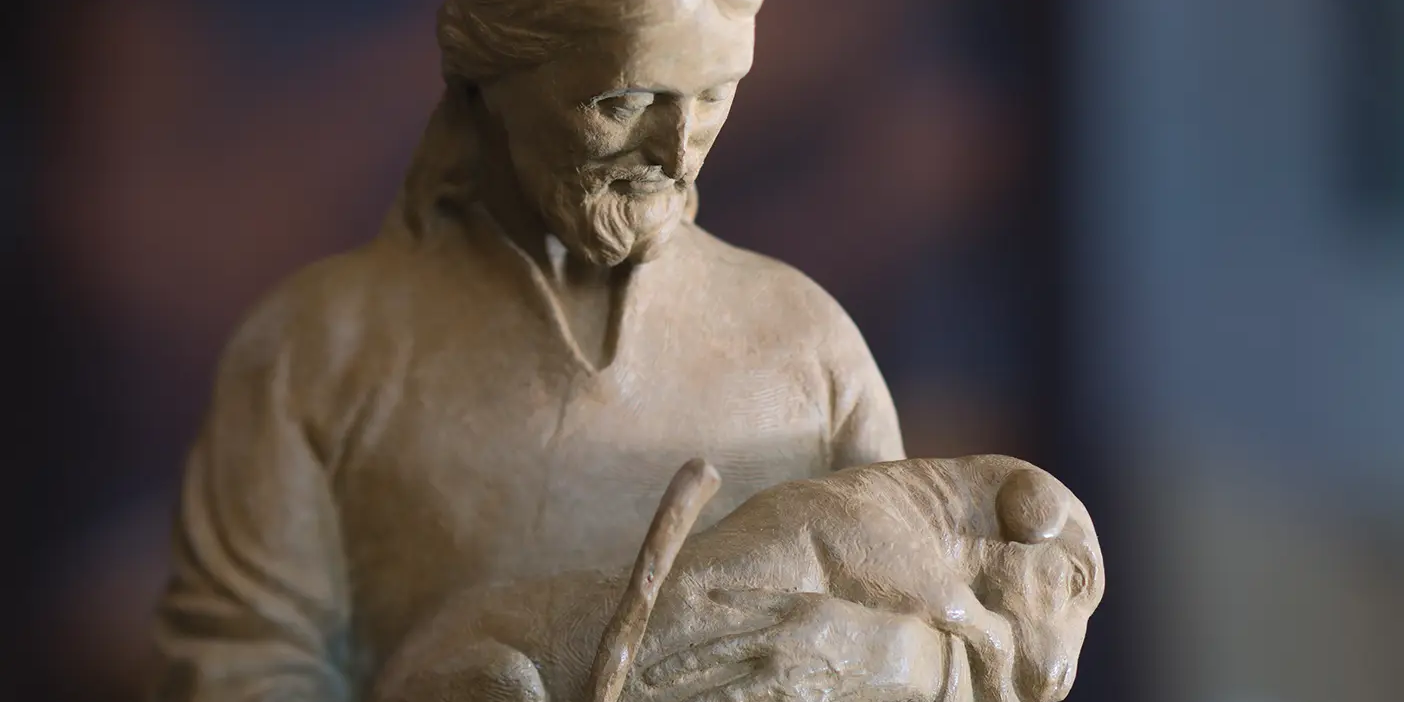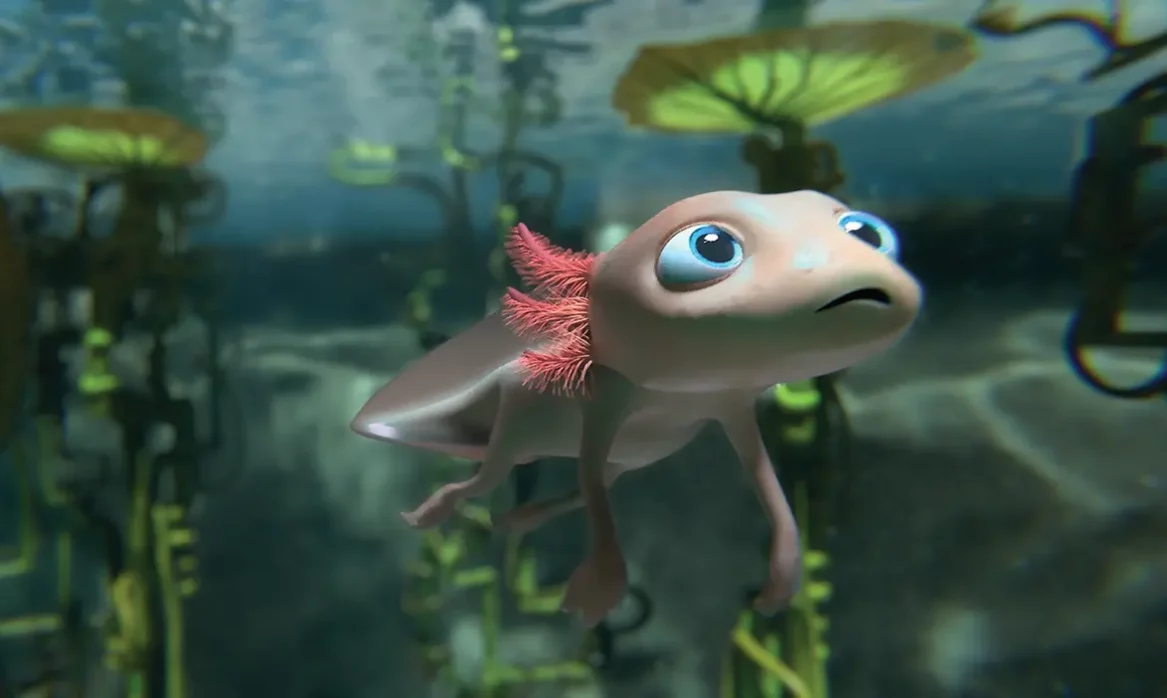
“Rats!” Charlie Brown has endured yet another public failure.
The classic comic strip—published in newspapers from 1950 to 2000—has a surprising audience: a group of students donning white lab coats, examining the scene carefully on their glowing laptop screens. Charlie Brown, types one student. Then, “Rats!” / He throws his baseball glove.
Under the direction of digital-humanities professor Brian L. Croxall (BA ’02), these students are building a corpus (a digitized and searchable database) of the Peanuts universe to identify patterns in Charles Schulz’s beloved comic strip. That’s right, these students buddy up with Charlie Brown, Snoopy, and Lucy in a digital humanities research course offered since 2020.
“I read six years’ [worth]” of Schulz’s 50-year work, says Maria M. Archibald (’24), Croxall’s former research assistant, making her something of an expert.
“In all kinds of research, we look for patterns to try to understand,” Croxall says. Dressed in lab coats in class as a playful reminder that they are engaging in real research, Croxall’s students uncover patterns in Peanuts through digital tools and critical thinking.
Comic Communities
The students created a Peanuts community “network graph” by mapping which characters appear together. Finding Charlie Brown at the center with strong ties to characters like Lucy and Snoopy was no surprise. But a separate community formed around Marcie, Peppermint Patty, and Franklin. These characters “live across town” from Charlie Brown, Croxall explains, mirroring constraints that would similarly affect real-life communities.
Making Sense of Speech
Why do Snoopy’s thought bubbles so often contain the word I? Why is Patty’s and Violet’s speech supercharged with the word you? The computer finds patterns like these for the students to interpret. “Involved as he is in his fantasies, [Snoopy is] easily the most egocentric character in the strip,” deducts Croxall, while Patty and Violet spend much of their time addressing—and scolding—Charlie Brown, as in the comic above.
Maximizing Moments
American comics often drive narrative from frame to frame through obvious character movement or scene changes. Not so in Peanuts: a subtler model accounts for 29 percent of Schulz’s transitions (see the comic above). Known as moment-to-moment transitions, they include changes in facial expression or posture. While more research is needed to determine how unique this is to Peanuts, it could “point to the small scale of the dramas and indignities that Schulz so expertly chronicled in his strip,” says Croxall.












